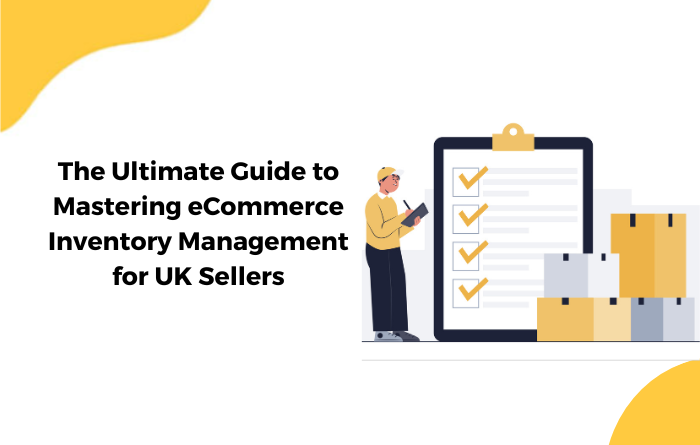
Essential Cash Flow Management Tips for Amazon FBA Sellers
Did you know that an astounding 82% of businesses close due to cash flow issues? Cash flow is often overlooked

In the fast-paced world of ecommerce, managing your cash flow effectively is essential for the long-term success and growth of your business. Whether you’re running an Amazon FBA store, a Shopify shop, or another ecommerce brand, understanding and implementing solid cash flow management strategies can be the key to maintaining a healthy financial position. In this blog, we will explore the importance of cash flow management for ecommerce businesses and provide you with practical tips and tools to help you stay on top of your finances.
Cash flow management is crucial for all businesses, but it is particularly vital for ecommerce brands. Here’s why:
A well-managed cash flow ensures that your ecommerce business has the necessary funds to cover all its expenses, including inventory, marketing, staff salaries, and other operational costs. By keeping a close eye on your cash flow, you can address any potential issues before they escalate, ensuring the sustainability of your business.
Ecommerce businesses often experience significant sales fluctuations due to seasonal trends, holidays, and promotional events. Effective cash flow management helps you prepare for these fluctuations, ensuring you have the resources to meet increased demand or cover costs during slower periods.
A healthy cash flow allows your ecommerce brand to invest in growth opportunities, such as expanding your product range, entering new markets, or scaling up your marketing efforts. By managing your cash flow effectively, you can make well-informed decisions about the future of your business.
To maintain a healthy cash flow, consider implementing the following strategies:
Monitor your cash flow on a regular basis – weekly or monthly, depending on the size and complexity of your business. This will help you identify trends, address potential issues, and make informed decisions about your finances.
Establish a cash reserve to help your business weather unexpected expenses or temporary cash flow challenges. This reserve acts as a safety net, providing you with the peace of mind to focus on growing your ecommerce brand.
Proper inventory management ensures you have the right amount of stock to meet customer demand without tying up too much cash in unsold products. Implement inventory control systems, consider just-in-time (JIT) ordering, and track inventory turnover rates to maintain optimal inventory levels.
Offer incentives for early payments, such as discounts or exclusive offers, to encourage customers to pay promptly. Monitor your accounts receivable closely and follow up on overdue payments to ensure you receive the cash you’re owed.
Negotiating favourable payment terms with your suppliers can help improve your cash flow. Consider requesting extended payment terms or negotiating discounts for early payments. Building strong relationships with suppliers can also lead to more flexible payment options, benefiting your overall cash flow situation.
Regularly review your expenses to identify areas where you can reduce costs without compromising the quality of your products or services. This may include renegotiating contracts, eliminating unnecessary expenses, or automating tasks to save time and money.
There are several tools available to help you manage your cash flow effectively. Some popular options include:
Accounting software: Cloud-based accounting software like Xero, QuickBooks, and Sage can help you monitor your cash flow in real-time, automate invoicing, and generate financial reports.
Cash flow forecasting tools: Applications like Float and Futrli enable you to create cash flow forecasts based on your historical data and future projections, helping you make informed decisions about your finances.
Inventory management software: Tools like TradeGecko, Cin7, and DEAR Inventory can help you maintain optimal inventory levels, track turnover rates, and streamline the ordering process.
Effective cash flow management is crucial for the success and growth of your ecommerce brand. By regularly monitoring your cash flow, maintaining a cash reserve, implementing efficient inventory management, and streamlining expenses, you can ensure your business remains financially healthy and well-positioned for future opportunities.
If you need assistance with cash flow management for your ecommerce business, we’re here to help. At Guide Hustle, we specialise in providing accounting services tailored to the unique needs of ecommerce brands, Amazon FBA sellers, Shopify sellers, and more. Contact us using the form below, and our team of experts will be happy to provide guidance and support to help you achieve your financial goals.
Related Posts

Did you know that an astounding 82% of businesses close due to cash flow issues? Cash flow is often overlooked

Discover the Key Tax, Logistic, and Operational Factors to Consider when Selling in the UK Introduction: Greetings, fellow eCommerce enthusiasts!

Grasping eCommerce inventory management basics 🎢 Managing inventory effectively is the backbone of any thriving eCommerce business. But it’s not
©2023. All Rights Reserved by Guide Hustle